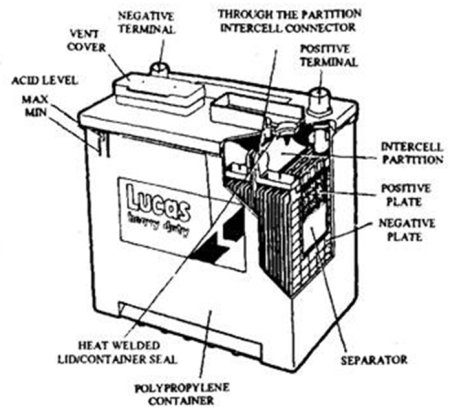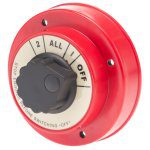 By Bob Currie, Recreational Boating Safety Specialist
By Bob Currie, Recreational Boating Safety Specialist
U. S. Coast Guard Auxiliary Station Galveston Flotilla
I was in line for the Port Bolivar to Galveston ferry early one morning to go to work on base. The deck hands unloaded the incoming ferry, and I put my truck in gear in anticipation of moving forward to load the ferry. But we were not directed to load. After a few long minutes we could see why: the deck hands were using the car pusher to shove a car off the ferry due to it having a dead battery. I asked the deck hands how often this happens. They said several times a day. People just don’t take care of their batteries like they used to. We don’t have full service gas stations like we used to. Well folks, I hate to tell you this, but there are no boat pushers out there on the water, so you better make sure you take care of your boat batteries unless you want to pay for an expensive water tow.

Battery Design
Batteries are typically made of six galvanic cells in a series circuit. Each cell provides 2.23 volts for a total of 13.4 volts at full charge. Each cell of a lead storage battery consists of alternating plates of lead (cathode) and lead coated with lead dioxide (anode) immersed in an electrolyte of sulfuric acid solution. This causes a chemical reaction that releases electrons, allowing them to flow through conductors to produce electricity. As the battery discharges, the acid of the electrolyte reacts with the materials of the plates, changing their surface to lead sulfate. When the battery is recharged, the chemical reaction is reversed: the lead sulfate reforms into lead dioxide. With the plates restored to their original condition, the process may be repeated. In the past, batteries required maintenance in the form of electrolyte refills. Modern batteries retain their fluid for the life of the battery. A weakness of these batteries is that they are very intolerant of a deep discharge, for example when the battery is completely drained by leaving the lights on. This coats the lead plate electrodes with sulfate deposits and can reduce the battery’s lifespan by a third or more.
Maintenance Free Batteries
Don’t let the term “maintenance free battery” fool you. Maintenance free batteries incorporate several modifications over a conventional battery. The most significant feature is that it is sealed (except for a very small vent-hole) and requires no service attention other than to be kept clean. Most maintenance free batteries also require a topping off with distilled water once a year. The electrolytic solution of sulfuric acid will lose water molecules through a process called gassing. If it were not for the vent holes, the battery would explode when gassing occurred. Clogged vent holes can and do result in battery explosions. Some loss of water molecules is normal, and that is why batteries must be topped off occasionally, but some conditions cause excessive gassing. Overcharging is the main cause of excessive gassing. When gassing occurs, the sulfuric acid becomes more concentrated; only water molecules are lost. That is why you add water to your battery to cover the cells rather than acid. You are not replacing the electrolyte solution when you add water- you are restoring the concentration by adding water. Another cause of excessive gassing is when the battery becomes overheated. If you are having trouble getting your boat motor started and keep cranking and cranking, your battery will overheat.
Battery Care
Get the most from your boat’s batteries by following these guidelines:
-
- Keep your batteries fully charged. Leaving a battery even partially discharged leads to sulfation and loss of capacity.
- Check the electrolyte solution level regularly. Top up as necessary with distilled water to keep the level about ¼” above the plates.
- Use only distilled water for topping up. Trace minerals and chlorine from tap water really do shorten battery life.
- Fill cells only after charging. If you fill them before, expansion during charging will pump electrolyte out on top of the battery, causing a corrosive mess and reducing the acid concentration inside the battery.
- Keep the top of the case clean and dry. Most boat batteries have a cover for just that purpose. Dampness, dirt and acid on top of the battery case can create a circuit between the terminals that will drain the battery or lead to stray voltage that can destroy your electronics.
- Keep terminals and cable clamps corrosion-free. There are commercial products such as dielectric grease you can use to coat the terminals to help prevent new corrosion.
- Make sure the positive terminal of the battery is covered.
- Secure the battery right. An unsecured battery will not pass a Coast Guard Vessel Safety Check. The battery must withstand a 75-pound pressure from the side without tipping over under Coast Guard regulations.
- If the battery is discharged to such an extent that it cannot crank the engine, and hence the engine has to be started by other means, then the alternator cannot recharge the battery. When this condition arises, the battery must be removed and bench-charged, because the voltage required to restore it is higher, and that higher voltage cannot be provided by the charging system of the boat.
Boat Battery Cut-Off Switch
We have already said that even partially discharging a battery reduces its life. In salty air like we have on the coast, it is easy for low voltage stray circuits to be established. These stray circuits not only discharge your battery over time, they play havoc with your electronic instruments. Many new boats come with a battery cut-off switch that disconnects the battery from all possible routes of stray currents. This switch is also a fire safety item. If you have an electrical fire on your boat due to a short, you can cut off the source of electricity by placing your battery cut-off switch in the Off position. I have my battery system set up so that if my main battery dies then I can switch to Position 2 and use one of my trolling motor batteries to start and run the engine.
These stray circuits not only discharge your battery over time, they play havoc with your electronic instruments. Many new boats come with a battery cut-off switch that disconnects the battery from all possible routes of stray currents. This switch is also a fire safety item. If you have an electrical fire on your boat due to a short, you can cut off the source of electricity by placing your battery cut-off switch in the Off position. I have my battery system set up so that if my main battery dies then I can switch to Position 2 and use one of my trolling motor batteries to start and run the engine.Summary
Care of your boat’s batteries is essential to getting back home safely from a trip on the water. Follow your battery manufacturer’s instructions for preventive maintenance and care and you will get back in on your own power. I recommend keeping batteries attached to a smart charger when not in use.For more information on boating safety, please visit the Official Website of the U.S. Coast Guard’s Boating Safety Division at www.uscgboating.org. Questions about the US Coast Guard Auxiliary or our free Vessel Safety Check program may be directed to me at [email protected]. SAFE BOATING!
[Nov-1-2022]

 Posted in
Posted in 
























